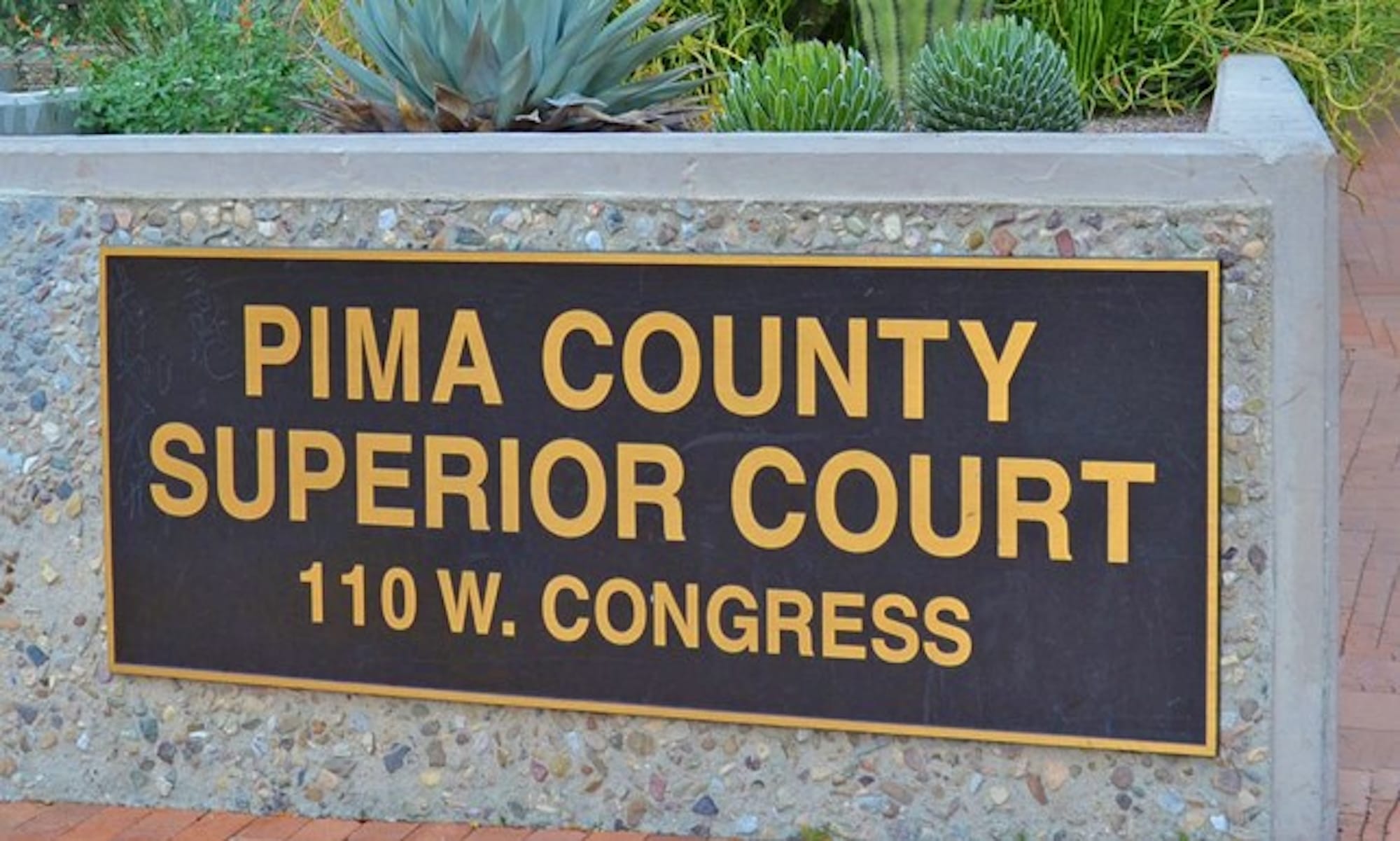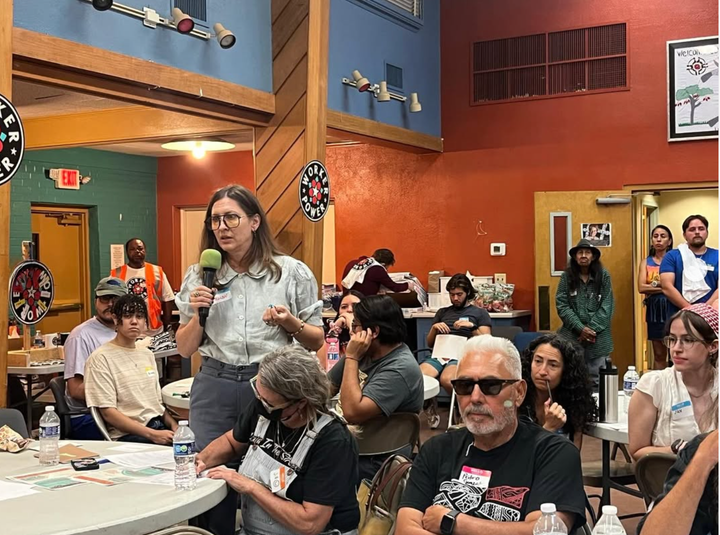Pima County's STEPs court evolves to fit real lives
Pima County’s STEPs Court has overhauled its rigid treatment model to better accommodate participants’ real-life challenges—resulting in higher graduation rates and more paths to recovery.

In a small corner of Pima County’s court system, a quiet revolution in justice is unfolding.
Three mornings a week, Courtroom 386 trades prison-bound plea deals for second chances, offering people arrested for low-level drug offenses a radically simple bargain: Commit to 30 days of treatment, and their felony charge disappears.
The program, called STEPs—Substance Treatment and Engagement Program—is less about punishment and more about possibility, reshaping lives one hearing at a time.
STEPs Court was launched in 2021 with funding from the MacArthur Foundation. It’s overseen by Pima County Superior Court Judge Renee Hampson and staffed by a rotating team of prosecutors, defense attorneys, probation officers and service providers.
STEPs diverts people arrested on personal-use drug possession or paraphernalia charges away from the criminal justice system and into treatment.
“If they show up, sign the contract and engage in 30 days of meaningful treatment, we dismiss the case,” said Peter Goodman, the Pima County Attorney’s Office’s STEPs supervisor. “If they don’t, prosecution goes forward.”
Eligibility hinges on two factors:
- The current arrest must involve only personal-use quantities.
- The defendant’s record must be free of violence or sex-offense convictions.

Pretrial Services screens every new booking; qualifying cases are “flagged” and scheduled for a STEPs hearing along with a regular court date.
During a person’s first STEPs hearing, Hampson shares with defendants the program’s promise: Complete treatment and the felony disappears; fail to engage and it won’t.
Participants leave the courtroom with an intake appointment, a review hearing 45 days later, and a list of on-site providers—including COPE Community Services, HOPE Inc., CODAC, Community Bridges, CMS and La Frontera—all with representatives ready to start paperwork on the spot.
STEPs abandoned its early criteria of 12 outpatient groups and a straight 30-day residential stay after staff noticed it didn’t fit into participants’ real lives.
Today, the benchmark is simply 30 days of “meaningful treatment.” That could be seven days of medical detox, two weeks in residential care and the rest in intensive outpatient groups—or any other mix, as long as it's approved by clinicians.
“You have individuals with different lives, different circumstances, and they might do a seven-day detox, followed by a week of inpatient, but because of insurance, they couldn't stay at the facility, and they do two more weeks of IOP,” Goodman said. “That's somebody who has made such a big leap in 30 days, you know, not everybody's the same.”
Once a participant picks a provider, court liaisons keep the paperwork moving. Caroline Peterson, a reentry specialist with COPE, meets clients in court, in jail and by phone. She ensures that once a plan is established, the participant is on the right track to care.
“I'll reach out and let them know these persons involved in this—to satisfy the court—they need to be involved in substance use groups,” she said. “So I make sure we have that communication with the case manager and myself and the participant so we're all on the same page.”
Goodman said the number of active participants in the STEPs diversion program typically ranges between 110 and 120 at any given time. That caseload reflects only those currently engaged in the program—not those who have completed it or are awaiting intake.
Data from 2024 and early 2025 is still pending, but Goodman says the graduation rate now “hovers around 50 percent,” up sharply since the program loosened its one-size-fits-all rules.
Hampson’s courtroom often becomes a space not just for legal proceedings, but for celebration of progress.
During a recent 45-day review hearing, she commended one participant for his rapid strides in treatment. Since joining the STEPs program just a few weeks earlier, the man had completed his intake with Community Bridges Inc. He’d also attended five group sessions, and likely would have attended a sixth had he not been in court that morning.
“This is spectacular,” Hampson told him. “You’ve got momentum. You’re almost there.”
She cheered his early dedication to recovery and led the entire courtroom in a round of applause—an uncommon gesture in most other courtrooms, but not so much in STEPs Court.
The exchange reflected her approach: offer accountability when necessary, but also provide generous recognition when participants are actively engaged.
The man, visibly proud, shared that one of the key lessons he’d absorbed was the importance of avoiding “people, places, and things” associated with his past substance use—a cornerstone concept in many recovery models.
Hampson affirmed his insight and concluded the hearing by suspending further court check-ins, indicating that his continued engagement could lead to dismissal of the felony charge.
“Congratulations,” she said. “Keep doing what you’re doing.”
The biggest barrier, insiders say, is communication. Many clients are unhoused and lose phones to theft or pawn shops. Transportation is less of an issue, since pretrial officers and providers can arrange rides, but a disconnected phone severs appointment reminders, lab test schedules and emergency check-ins.
“If there was more funding, as far as phones for our participants, that would close such a huge barrier,” Goodman said. “And I'd imagine we'd be able to get more people showing up, and coming to enroll.”

STEPs has evolved as word spreads. More providers now attend hearings, and the court has forged “warm-handoff” agreements for participants who move out of state.
Still, Goodman hopes to add partners that address needs beyond substance treatment—particularly housing and employment—so graduates can stabilize for the long haul.
For now, the court only tracks two metrics: graduations and removals. Long-term sobriety or recidivism rates remain uncollected, though staff believe the short, high-contact model plants a lasting seed.
“From their initial appearance to the review hearing, some people look like totally different people,” said reentry specialist Peterson. “Sometimes STEPs is the wake-up call they needed.”
Everyone involved stresses that STEPs is neither a giveaway nor a panacea. Participants must meet every deadline, answer every call and sit through every group. But the payoff is tangible: a clean slate instead of a felony record that can block jobs, housing and future treatment.
“It's multiple opportunities,” Peterson said. “It's not just one and done. And I would also want people to know that treatment is always there for you, no matter if you were successful in STEPs or not, as long as you're striving to better your life. You know, just keep coming back.”
For defendants standing before Hampson, the choice is stark: 30 days of work or the possibility of years under a felony’s shadow.
As Goodman tells each new group, “It's not just a slap on the wrist, it's a very meaningful program that facilitates introducing the treatment world to somebody who's struggling in the system.”
Samantha Callicutt is a Tucson Spotlight reporter and graduate student at the University of Arizona. Contact her at Scallicutt@arizona.edu.
Tucson Spotlight is a community-based newsroom that provides paid opportunities for students and rising journalists in Southern Arizona. Please support our work with a paid subscription.




